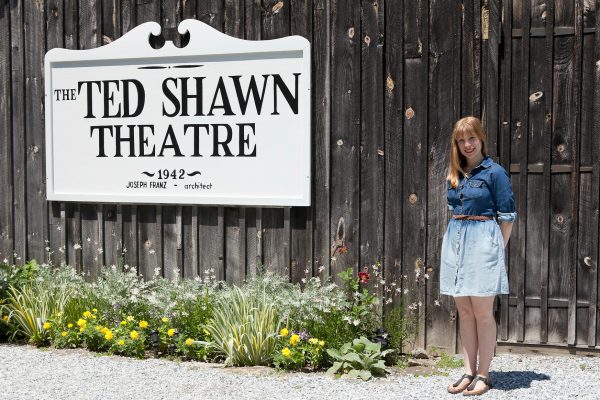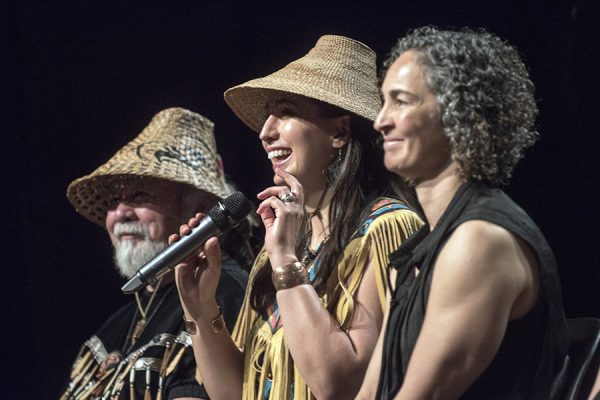Joshua Beamish is not the male dancer who woke up as a young adult, decided to give dance a try and is now overwhelmed with work. He is overwhelmed with work, but that’s after three decades of dedication to the form. He gets to start counting his life in dance from the beginning: his mom is a ballet teacher and dance has always been central in his life. I’ve known of Beamish since we were both competing in festivals in and around the Okanagan as kids — boys in these dance environments are easy to remember. I can’t say I recall his dancing or choreography from back then but they did stand out when I saw him next. We were in our early twenties in Toronto and he was visiting with his newly formed MOVETHECOMPANY. I found his work commercial in its qualities — explosive and outward in its expression. It felt amateur, which for the age of everyone involved, was fair.
That Beamish is not what we just saw at The Dance Centre last week. The now thirty-year-old choreographer brought his new work, Saudade, for six male dancers to Vancouver as part of a bigger tour. As a group work, it is mature, well-crafted and expertly performed. And it’s no wonder. Beamish has spent the last decade working with an impressive roster of ballet and contemporary companies around the world, including collaborations with The Royal Ballet, with principals from New York City Ballet and more. His company has toured extensively and he’s been hosted in residencies by many notable institutions.
Saudade, which was commissioned by Theater Freiburg in Germany and premiered last March in Toronto at Harbourfront Centre, seems to perfectly encapsulate who Beamish is now, as a person and as a creator. Its name is a Portuguese word for having a deep incompleteness and recognizing that feeling as familiar. This is supposed to reference Beamish’s personal life and many lovers past. However, on the men performing, it comes across as a variety of relationship-based scenarios — romantic or not. Beamish explains in the talkback that this work started before he knew what it was about. He quickly got to making after being offered some funding, and it wasn’t until later that he realized he had created something deeply personal, something he couldn’t leave outside the studio. Beamish travels a lot, his life is nomadic and he is currently questioning how relationships fit into this lifestyle. This is what Saudade means for him. For an audience, it’s recognizing a range of relationships that we can relate to, those that are fleeting for us and others that have been lasting.
Because of the way Beamish works with dancers — setting choreography as opposed to inviting each dancer to interpret choreographic cues — and because these dancers are all men, the stage is at times an assembly of Beamish clones. There are small details that I’ve seen in his more recent solo work that are strange to see on others, like this nonchalant hip thrust, shoulder punch or that piercing gaze. They feel personal. During the talkback, the dancers were asked how they maneuver through this very specific choreography. A few were relatively new to the work — casts have had to change since it was originally created in 2015 — and were reluctant to answer. One said he tried to accomplish the specificity as best as he could and then enjoy the bit of room in between to interpret the more emotional aspects.
The result of this very specific choreography and Beamish’s casual performing style is cold. There is a disturbing lack of emotion in a work that considers lost love. What we see is longing or disconnect through compositional techniques like a member of the group walking away mid-phrase, or duets that manipulate but don’t stop to feel. There’s an electricity between the bodies that is created by the lack of intensity. This is augmented by the mood-setting lighting by Mike Inwood, who creates moody, highlighted or textured spaces as needed.
Saudade features the men dressed in regular pants, either in long sleeves or topless, and all in socks. The drawn-out cello score by Hildur Guðnadóttir roots the brief references to ballet vocabulary — a rond de jambe en l’air actually makes an appearance — while experimental accents support the range of contemporary explorations, like flexed feet and wrists that are countered with pedestrian sauntering.
Men on men onstage is often combative or overtly sexual but what is refreshing about Saudade is its window to the many other ways men, or women, relate. It’s tender, calculated, risky, cautious and so much more, often simultaneously. Saudade hints at all of this, without sentiment. It communicates in its crafting and quirky choreographic details, not in its emotional interpretation.
Tagged: Contemporary, BC





